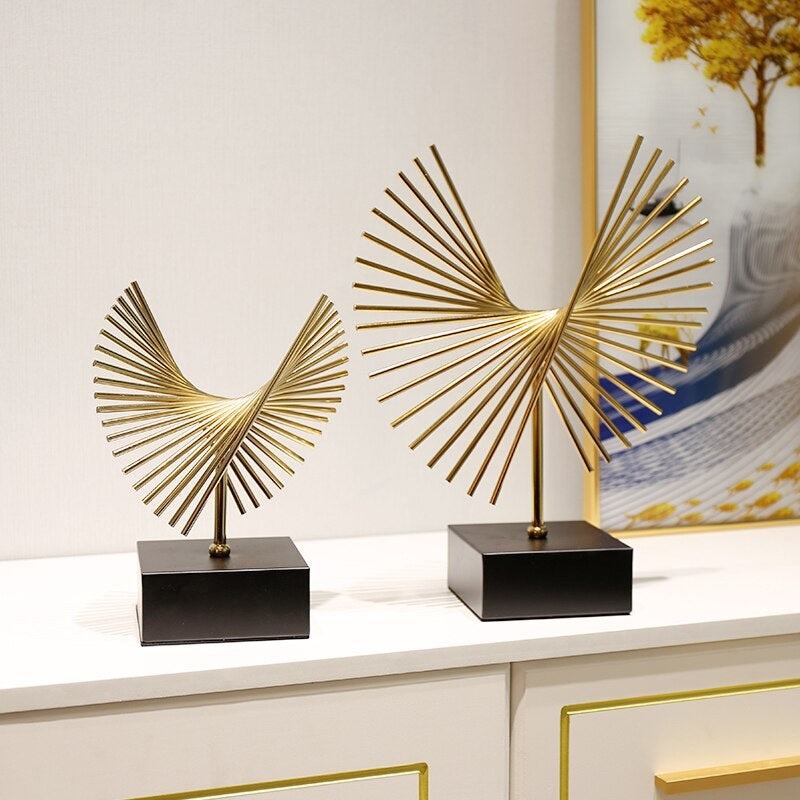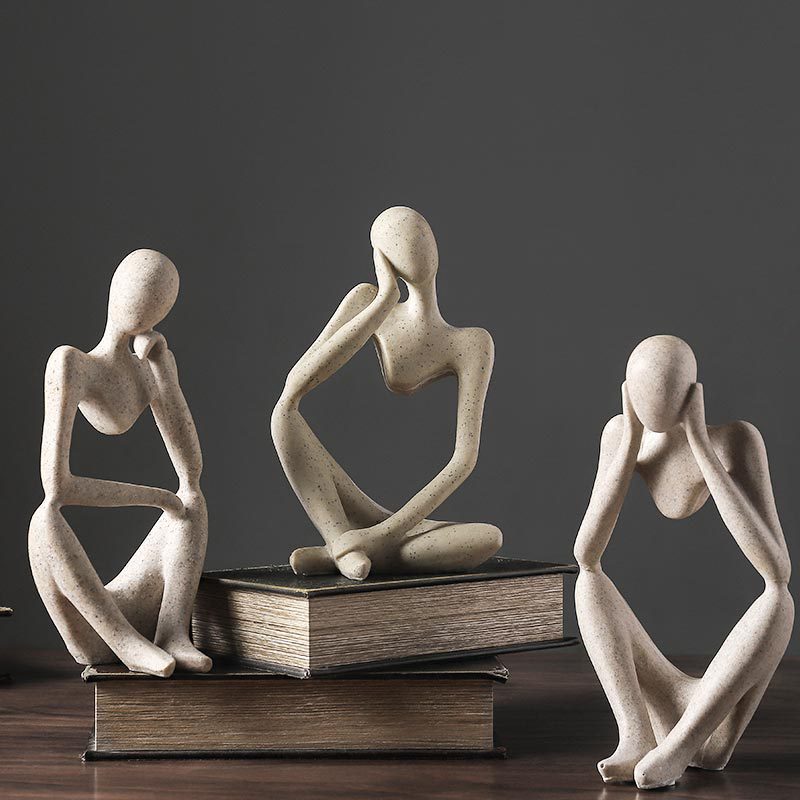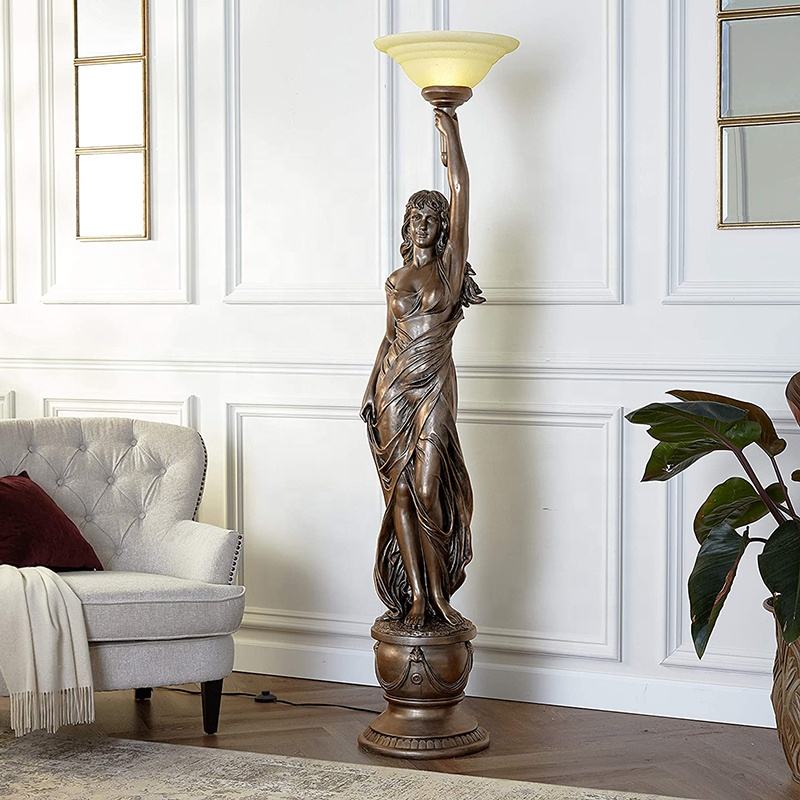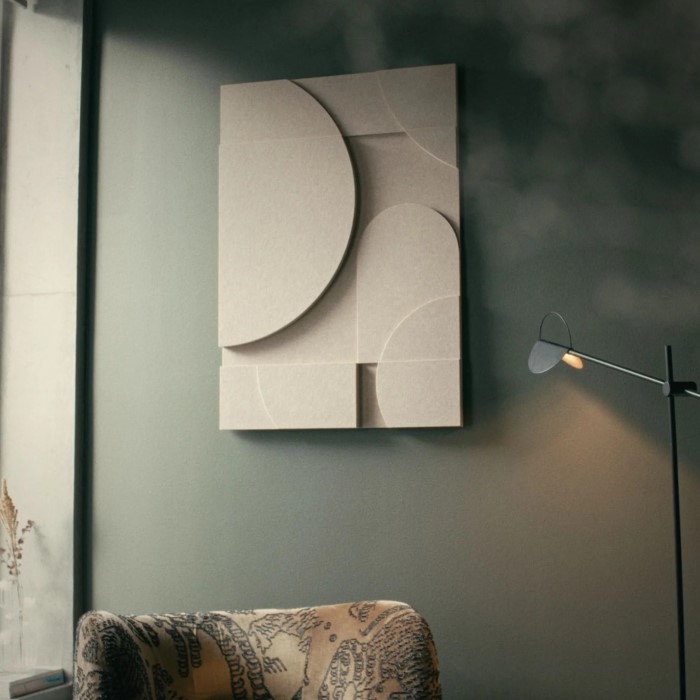Introduction to Interior Decoration Statues
The world of interior decoration is vast and varied, filled with countless ways to express personal style and creativity. Among the myriad options available to enhance a living space, one particularly impactful element is the inclusion of statues. Whether they are striking contemporary pieces or timeless classical figures, interior decoration statues(French:statue déco intérieure) have the power to transform a room, add depth to a decor theme, and convey a sense of personality and culture. This article aims to explore the various ways in which interior decoration statues can elevate your decor, providing insights into their design, placement, and impact on different spaces.
The Role of Statues in Interior Design
Historical Significance of Statues in Interior Spaces
Statues, sculptures, and three-dimensional art have been a part of human history for centuries, echoing the artistic expressions of different cultures and eras. From the grandiose chiseled marble of Ancient Greece to the elaborate bronze works of the Renaissance, these pieces were not only a display of artistry but often held profound meanings and cultural significance. In modern interior design, the role of statues continues to evolve, acting as focal points or conversation starters that enrich the aesthetic value of a space. By understanding the historical context of these installations, one can appreciate their substantial influence on contemporary design choices.
Statues as Statement Pieces
In a room filled with various decorative elements, a well-placed statue can emerge as a statement piece, drawing attention and admiration from onlookers. These sculptural forms can serve as the anchor of a design scheme, elevating the overall tone and character of the space. A bold abstract statue in a minimalist room can create a dramatic contrast, while a finely detailed classical figure can add elegance and sophistication to a traditional setting. Statues not only enhance visual appeal but also provide a focal point around which other decor elements can be woven, creating a cohesive narrative throughout the room.

Choosing the Right Statue for Your Space
Size and Scale Considerations
When incorporating statues into your home, one of the primary considerations is the size and scale of the piece in relation to the space. A large, commanding figure can fill an empty corner or serve as a centerpiece in a spacious living room, whereas smaller statues might be best suited for shelves or side tables. The height and bulk of the statue should be proportionate to the other elements in the room to avoid overwhelming the space or losing it among other furnishings. Understanding the scale not only contributes to the aesthetics but also influences the overall flow and harmony of the decor.
Material Matters: Choosing Complementary Textures
The materials used for statues can greatly affect their visual and tactile appeal. Common materials include marble, bronze, wood, ceramic, and glass, each offering a distinct texture and finish that can either complement or contrast with the existing decor. For instance, a sleek, modern glass sculpture might resonate well with contemporary decor, whereas a rustic wooden figure could enhance a farmhouse-style interior. The texture of the materials also influences how light interacts with the statue, creating depth and visual interest. Therefore, considering the material is essential in ensuring that the statue harmonizes with the overall concept of the room.

Placement Strategies for Impact
Creating Focal Points with Statues
Once you have selected the perfect statue for your space, the placement is crucial. Statues can be positioned to create visual focal points, guiding the eye to key areas in a room. For instance, a tall statue placed in a hallway can invite exploration, leading guests into the deeper parts of your home. Similarly, a prominent piece in the living room can encourage conversation and engagement among visitors. When considering placement, think about the sightlines from various angles and how the statue interacts with other elements within the space. Proper placement elevates the statue from mere decoration to a central feature within your interior décor.
Balancing with Other Décor Elements
Balancing statues with other decorative elements is vital for achieving a harmonious and well-composed space. An effective approach is to consider the density of your decor—how busy or sparse can the space be without feeling overwhelming? Too many competing elements can detract from the striking beauty of a statue, while an under-decorated space might make it feel awkward or misplaced. To strike this balance, arrange surrounding furniture and decorations in a way that creates a visual dialogue between the statue and its environment. Use complementary color palettes, shapes, and materials to enhance the natural beauty of the statue and elevate the overall decor.

The Emotional and Psychological Impact of Statues
Stimulating Cultural and Emotional Connections
Statues often carry significant cultural meanings or personal stories that can deepen the emotional connection one has with their space. A statue depicting a historical figure, a beloved mythological character, or even an abstract form that resonates emotionally can transform a house into a home. Such connections encourage reflection and provoke thoughts, creating an environment that fosters imagination and creativity. In this way, statues serve not just as adornments but as comforting reminders of values, beliefs, and sentiments that shape one’s identity, enhancing the emotional depth of the living environment.
Enhancing Mood and Atmosphere
The presence of statues in a room can significantly alter its mood and atmosphere. The visual weight of a sculpture can instill feelings of calm, inspiration, or even excitement, depending on its design and placement. For instance, peaceful, serene figures can create a tranquil aura in a meditation room or bedroom, while bold, dynamic sculptures might spark vivacious energy in a creative workspace. By intentionally incorporating statues into your decor, you can strategically influence the emotional landscape of your home, making it a space that nurtures both relaxation and inspiration.

Maintenance and Care of Interior Decoration Statues
Cleaning Techniques by Material Type
Proper maintenance of statues is crucial to ensure they remain a beautiful aspect of your home for years to come. The cleaning method depends significantly on the type of material the statue is made from. Marble statues, for instance, may require gentle cleaning with a soft damp cloth and a mild solution to maintain their finish, while bronze pieces might enhance in patina over time and require less frequent cleaning. Understanding the care requirements of your specific statue not only preserves its appearance but can also prevent damage caused by improper cleaning methods. Regular maintenance will keep your statues looking their best and ensure their longevity.
Displaying Statues with Thoughtfulness
Beyond cleaning, careful consideration should be given to where and how statues are displayed. Some materials may be sensitive to sunlight, requiring that they be placed away from intense light sources to prevent fading or discoloration. Additionally, the location may impact the statue’s spiritual or aesthetic significance; for example, placing a Buddha statue in a meditative corner creates a peaceful atmosphere, while an abstract piece in a living area may foster creativity and engagement. By being thoughtful about how, where, and when statues are displayed, their impact on your space can be maximized.

The Symbolism and Storytelling of Statues
Each statue tells a story, acting as a silent narrator of history, culture, and personal journeys. When thoughtfully selected, a statue can encapsulate an important story related to heritage, memory, or aspiration. For instance, a statue of a cultural icon might evoke pride and a sense of belonging, serving as a conversation starter about shared histories and experiences. Similarly, a statue representing a loved one can evoke cherished memories and allow for a space of reflection. By embracing the storytelling potential of statues, individuals can create environments that celebrate personal and collective histories, enriching their everyday lives.
The Role of Statues in Community Spaces
Statues are not just confined to personal living spaces; they also play an integral role in community settings, serving as shared focal points that can foster interaction and engagement. Public sculptures and monuments often commemorate significant historical events or figures, becoming symbolic landmarks that encourage community pride and collaboration. These statues can prompt discussions among community members about cultural values and aspirations while also generating a sense of belonging and identity within the larger social fabric. By enhancing public spaces with thoughtfully placed sculptures, communities can cultivate stronger social bonds and collective memories, enriching the lives of their inhabitants.
Conclusion: The Transformative Power of Statues
In conclusion, interior decoration statues are much more than decorative items—they are transformative elements capable of elevating the aesthetics and emotional resonance of any space. With historical roots that enrich their significance, they embody culture, creativity, and personal expression. By carefully selecting and placing statues, balancing them with other decor elements, and maintaining them thoughtfully, homeowners can create versatile interiors that reflect their unique character and enhance their well-being. Whether used as focal points, conversation starters, or elements of harmony, statues represent an artful way to elevate your decor and enrich your daily living experience. Embrace the transformative power of statues, and watch as your space evolves into a canvas of beauty, meaning, and inspiration.








